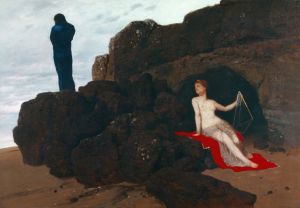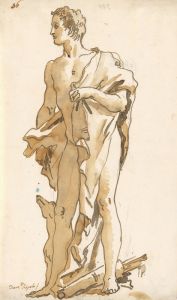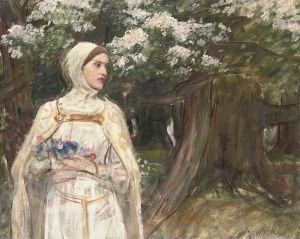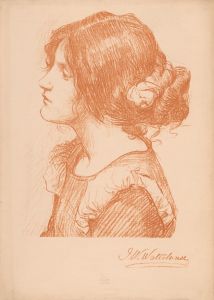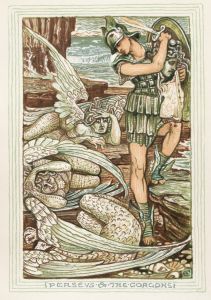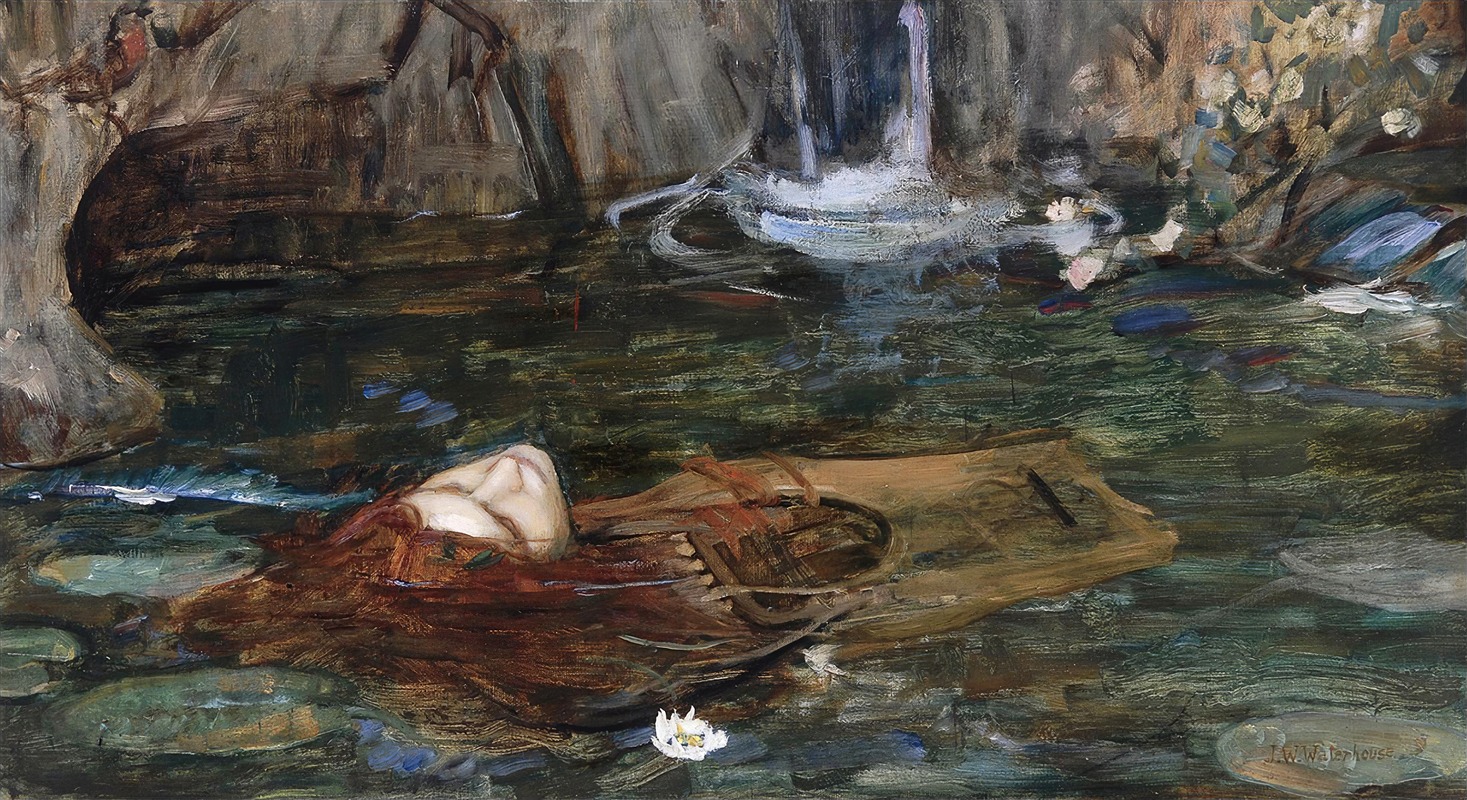
Study For Nymphs Finding The Head Of Orpheus
A hand-painted replica of John William Waterhouse’s masterpiece Study For Nymphs Finding The Head Of Orpheus, meticulously crafted by professional artists to capture the true essence of the original. Each piece is created with museum-quality canvas and rare mineral pigments, carefully painted by experienced artists with delicate brushstrokes and rich, layered colors to perfectly recreate the texture of the original artwork. Unlike machine-printed reproductions, this hand-painted version brings the painting to life, infused with the artist’s emotions and skill in every stroke. Whether for personal collection or home decoration, it instantly elevates the artistic atmosphere of any space.
"Study for Nymphs Finding the Head of Orpheus" is a work by the renowned British artist John William Waterhouse, who is best known for his association with the Pre-Raphaelite Brotherhood, although he painted in a style that was more aligned with the later phases of the movement. Waterhouse was born in 1849 and became famous for his depictions of mythological subjects, often featuring women in enchanting and dramatic settings.
This particular study is related to the myth of Orpheus, a legendary musician, poet, and prophet in ancient Greek religion and myth. According to the myth, Orpheus possessed the ability to charm all living things and even stones with his music. After the tragic death of his wife, Eurydice, Orpheus attempted to retrieve her from the underworld but failed. In some versions of the myth, Orpheus meets a violent end at the hands of the Maenads, followers of Dionysus, who tear him apart. His head and lyre, however, continue to sing and play music as they float down the river.
Waterhouse's study captures the moment when nymphs discover the head of Orpheus. The nymphs, often depicted as beautiful female spirits of nature, are shown in a state of discovery and contemplation. This theme fits well within Waterhouse's oeuvre, as he frequently explored narratives from classical mythology, focusing on the emotional and mystical aspects of these stories.
The study itself is a preparatory work, which means it was likely created as a preliminary exploration of composition, form, and color before Waterhouse executed a final version of the painting. Such studies are valuable for understanding an artist's process and the development of their ideas. They often reveal the artist's initial thoughts and how they plan to tackle complex subjects.
Waterhouse's technique is characterized by his use of rich colors and attention to detail, which can be seen in the delicate rendering of the nymphs and the natural setting. His work is noted for its romanticism and the ability to convey narrative through visual means, drawing viewers into the mythological world he depicts.
"Study for Nymphs Finding the Head of Orpheus" exemplifies Waterhouse's fascination with the interplay between beauty and tragedy, a common theme in his work. The painting invites viewers to reflect on the enduring power of art and music, symbolized by Orpheus's head, which continues to inspire even after death.
While specific details about the date of creation or the current location of this study are not readily available, it remains an important piece for understanding Waterhouse's artistic journey and his contribution to the depiction of mythological themes in art. As with many of Waterhouse's works, this study highlights his skill in storytelling through painting, capturing the imagination of those who view it.





